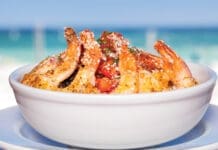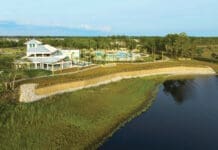 By Julie McConnell, UF/IFAS Extension
By Julie McConnell, UF/IFAS Extension
My favorite time of year has always been the fall. College football, lower temperatures and humidity, and approaching holidays are seasonal activities I start to look forward to as soon as the thermometer hits 90. Just like some people enjoy hot summer months while others prefer the cool of fall and winter, our annual color plant palette has preferences, too.
Annual flowers and foliage plants fall into two general categories: warm season and cool season. Warm season annuals are typically sensitive to hard frosts but perform well during the spring and summer. Examples of warm season annuals are begonias, impatiens, coleus, zinnias, and vinca. If your home has a warm microclimate (sheltered from winter winds or near a large body of water helps) then you may be able to grow warm season plants year-round with just reduced growth in the winter. However, if your landscape gets exposure to winter winds and frost can settle you may want to consider switching to cool season annual color this month.
Here are a few frost tolerant plants to consider for your landscape to offer color through fall and winter!
Ornamental Cabbage and Kale
Just as this is the ideal time to plant edible cabbage and kale in your vegetable garden, you can also use ornamental versions of these plants for your landscape. The ornamental versions aren’t very tasty, but their foliage is outstanding. Variations of straight edge or ruffled leaves, and colors that include all shades of green, white, cream, purple, and even pink tones are available. Be sure to check tags for mature width and spread and give them space to expand – some can get over a foot wide and tall!
Swiss Chard
This brightly colored ornamental plant can be eaten or just display showy colors in the garden. A few cultivars I like are ‘Bright Lights’ which has green leaves with green, orange, or red stems and ‘Rhubarb’ which has red leaves. You can harvest the leaves and stems and it will grow back repeatedly if given adequate water and nutrition.
Snapdragon
Snapdragons are a great way to add some vertical interest and color to your winter garden. Spikes of brightly colored flowers bloom all throughout the cool season in Florida. There are many sizes and colors available, so be sure to check the label for mature size – some get 2-3 feet tall! These taller varieties make a wonderful backdrop for compact flowers and foliage plants. Flower colors range from white, yellow, pink, red, lavender to orange.
 Pansies
Pansies
Pansies thrive in cool weather and full sun. Although they are not what we might call “drought tolerant” be careful of overwatering since they are susceptible to several fungal diseases that is favored by extended periods of wet foliage. Pansies have compact green foliage growth topped by large colorful flowers in white, blue, yellow, orange, purple, red, or black. Many varieties have a distinctly different center or “eye” color.
Violas or Johnny Jump-ups
This close relative of pansies has a smaller, more delicate looking flower. Although not as showy as pansies, violas tend to be a little easier to care for so may be a better option for busy gardeners. Available in similar colors as pansies.
Swap out your warm season annuals for cool season plants a few weeks before the first anticipated frost date to ensure they have enough time to get established before a severe cold snap. Late October to mid-November is a good time to plan to make that transition in Panama City Beach.
An Equal Opportunity Institution. UF/IFAS Extension, University of Florida, Institute of Food and Agricultural Sciences, Andra Johnson, Dean. Single copies of UF/IFAS Extension publications (excluding 4-H and youth publications) are available free to Florida residents from county UF/IFAS Extension offices.





















































